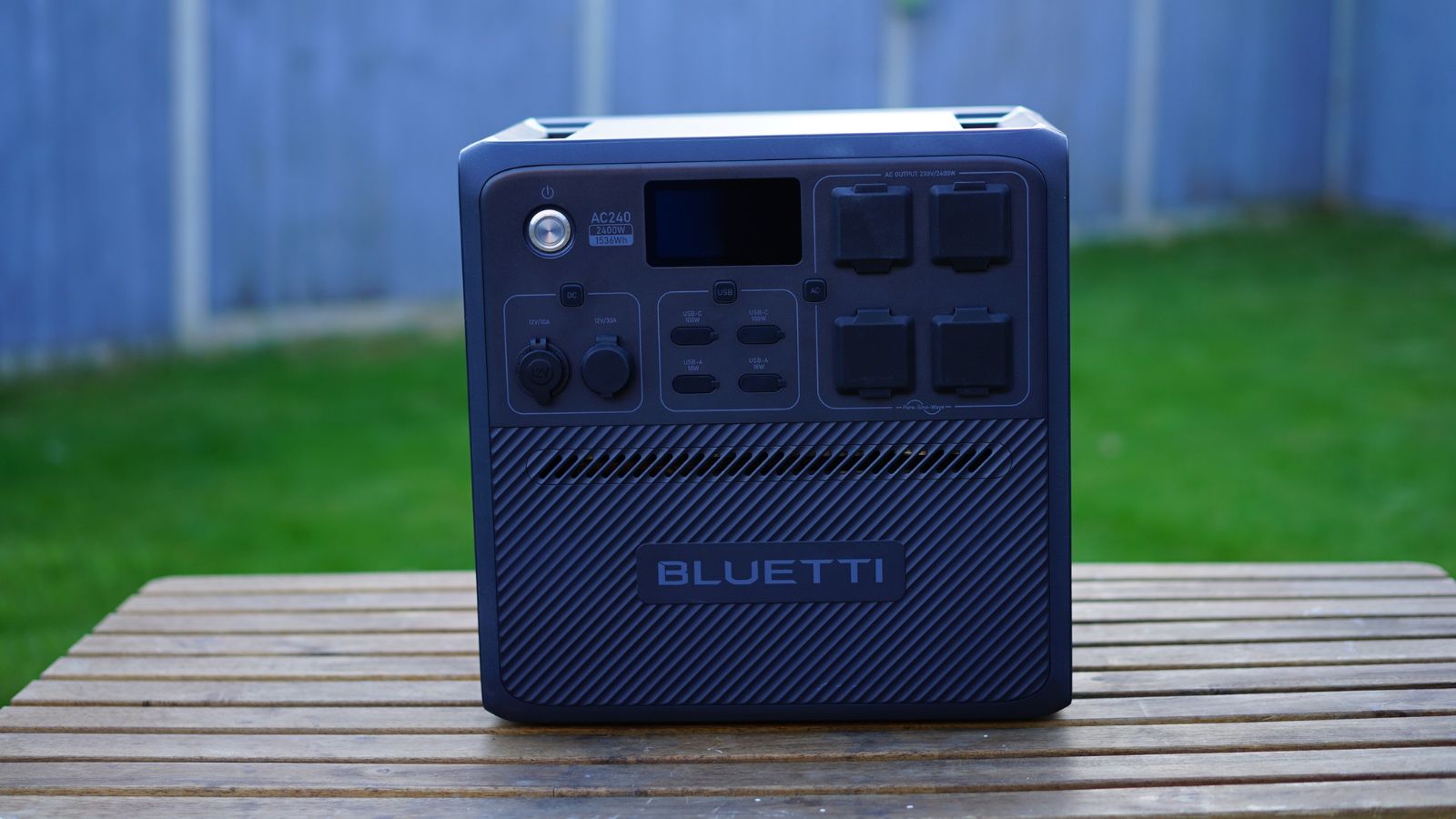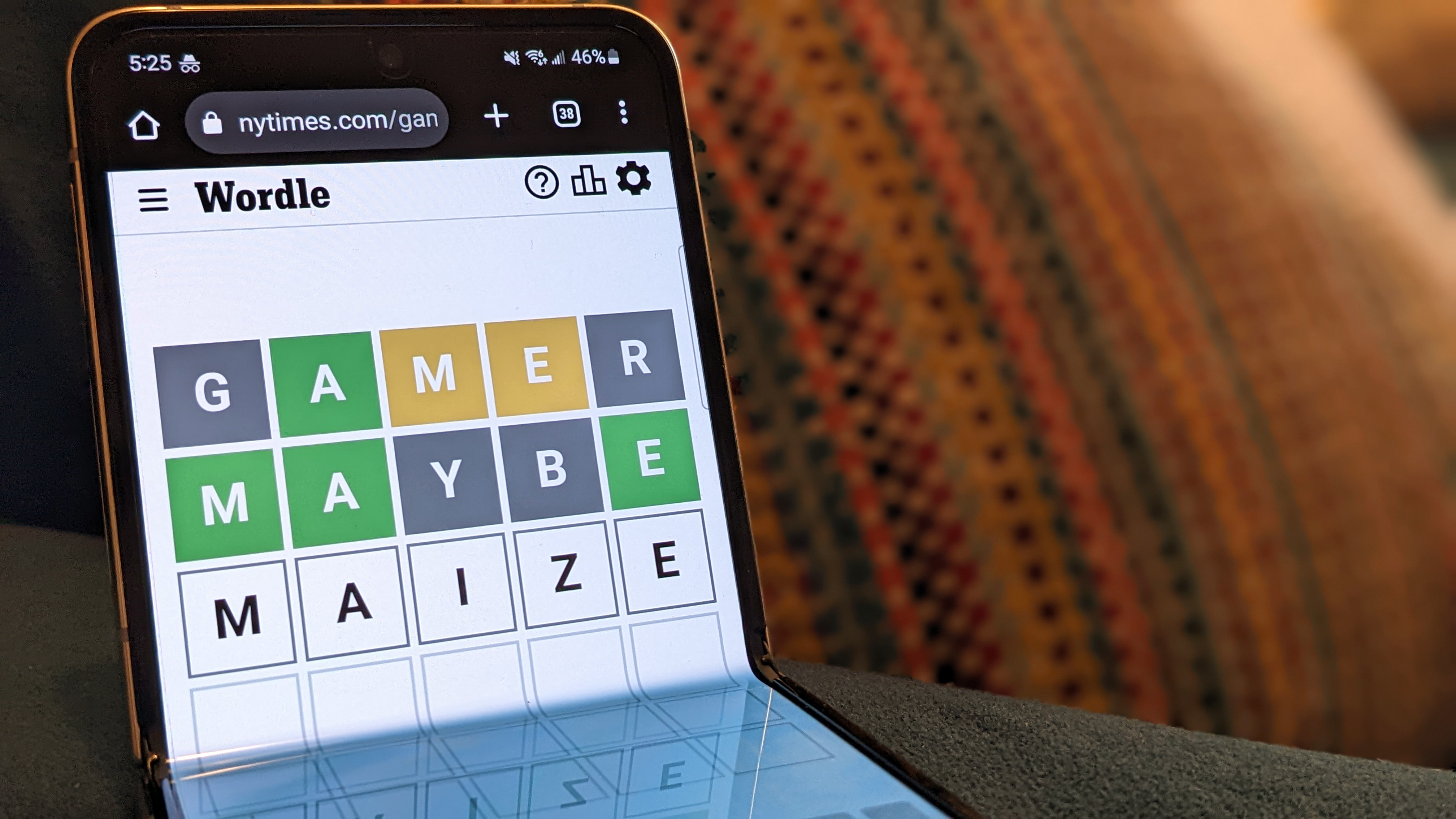Sonos Ace review: was it worth it?
The first headphones from Sonos deliver on comfort, sound, and more — with a unique TV Audio Swap feature that’s very convenient (when it works). But the ongoing app fiasco casts a cloud over the company’s big moment. Sonos is going through a tumultuous period. Its redesigned app has gotten mixed reviews, to put it lightly, and there’s a widespread perception that Sonos released it in an undercooked state because the company was hell-bent on shipping its first-ever headphones on time. The $449 Sonos Ace headphones are hitting their June 5th launch target. Was it worth it? In my first look at the Ace, I applauded their hardware design and premium feel. And I’ve remained impressed over the course of reviewing them. Sonos has nailed style, fit, and comfort to such an extent that I keep forgetting these are a debut product in a new category for the company. They also largely deliver on sound quality, noise cancellation, and a transparency mode that’s second only to Apple’s in how lifelike and natural it sounds. That’s all before you get to the signature trick of these headphones: TV Audio Swap. When it works, you can instantly transfer any sound coming from a Sonos Arc soundbar to the headphones with the press of a button. This private listening mode supports spatial audio and head tracking to ramp up the immersion when watching movies, and it works with any input device running through your TV — be it an Apple TV, Roku, or gaming console. But true to the state of Sonos in mid-2024, the Ace headphones can be buggy. TV Audio Swap doesn’t always work flawlessly. And for now, this marquee feature is only available to Ace buyers who also own an $800 soundbar and an iPhone or iPad; Android compatibility won’t arrive until later this year. For everyone in the Android crowd, these are simply a nice pair of noise-canceling headphones — but they’re completely detached from the Sonos ecosystem. That leaves little incentive to choose the Ace over Sony’s WH-1000XM5 or Sennheiser’s Momentum 4 headphones until Sonos follows through on adding TV Audio Swap. And no matter what phone you have, the Ace can’t be grouped with other Sonos speakers. That means no listening to vinyl records through them; it works with any input going into your TV, not any input going into your Sonos system. The Ace headphones look like a hybrid of Sony’s WH-1000XM5 and Apple’s AirPods Max. Nailing the fundamentals on the first try Still, the hardware makes a great first impression. The Ace headphones come in a felt-covered case that’s made from recycled plastics. I’m always concerned about how much bag space non-folding headphones will take up, but the Ace’s case is nicely flat, which helps make it easier to take on the go. Inside is a pouch that attaches to the case magnetically: this is where you’ll store the included USB-C and USB-C-to-3.5mm cables. (Wired listening is possible with either cable.) The carrying case includes a small pouch for cables. The Ace look like a blend of the 1000XM5 and Apple’s AirPods Max. They’re understated yet stylish. The embossed Sonos logo on the right ear cup calls little attention and is easy to miss in most lighting. The stainless steel slider arms allow for precise fit adjustments — though, as usual, my giant head requires full extension. And the magnetic memory foam ear cushions just pull right off if you ever need to replace them. The insides are different colors to help you orient the headphones, but I’ve found it easier to just remember that the metal Content Key slider always goes on the right side. I’m curious how the pleather headband will hold up over time, but in most respects, the Ace are a fantastically made set of headphones that balance sophistication and subtlety. Sonos prototyped over 20 shades of white before deciding on this one. The ear cushions are easily removable. And damn, are they comfortable. The headphones are 0.69 pounds, which doesn’t match the airy feel of Bose’s QuietComfort Headphones (0.52 pounds) but is noticeably lighter than the AirPods Max (0.85 pounds), especially the longer you wear them. For my fellow glasses people, the clamping force never put too much pressure on my frames. However, the Ace lack any water resistance rating, so work out with them at your own risk. The headphones have physical controls, which I favor over touchpads and swipe gestures. On the right ear cup is the Content Key, which can slide up or down to adjust volume. You press it once to play / pause, twice to skip forward a track, or three times to go back. Holding down the Content Key engages TV Audio Swap. Below the slider is a round button that toggles between active noise cancellation and the “aware” transparency mode. On the left ear cup is the USB-C port along with a power / Bluetooth pairing button. The Ace support multipoint Bluetooth, so they can be paired with two devices at the same time. They’ve also got on-head detection and automatically pause your music if you remove them. Batt
/cdn.vox-cdn.com/uploads/chorus_asset/file/25475375/DSCF7410.jpg)
The first headphones from Sonos deliver on comfort, sound, and more — with a unique TV Audio Swap feature that’s very convenient (when it works). But the ongoing app fiasco casts a cloud over the company’s big moment.
Sonos is going through a tumultuous period. Its redesigned app has gotten mixed reviews, to put it lightly, and there’s a widespread perception that Sonos released it in an undercooked state because the company was hell-bent on shipping its first-ever headphones on time. The $449 Sonos Ace headphones are hitting their June 5th launch target. Was it worth it?
In my first look at the Ace, I applauded their hardware design and premium feel. And I’ve remained impressed over the course of reviewing them. Sonos has nailed style, fit, and comfort to such an extent that I keep forgetting these are a debut product in a new category for the company. They also largely deliver on sound quality, noise cancellation, and a transparency mode that’s second only to Apple’s in how lifelike and natural it sounds.
That’s all before you get to the signature trick of these headphones: TV Audio Swap. When it works, you can instantly transfer any sound coming from a Sonos Arc soundbar to the headphones with the press of a button. This private listening mode supports spatial audio and head tracking to ramp up the immersion when watching movies, and it works with any input device running through your TV — be it an Apple TV, Roku, or gaming console.
But true to the state of Sonos in mid-2024, the Ace headphones can be buggy. TV Audio Swap doesn’t always work flawlessly. And for now, this marquee feature is only available to Ace buyers who also own an $800 soundbar and an iPhone or iPad; Android compatibility won’t arrive until later this year. For everyone in the Android crowd, these are simply a nice pair of noise-canceling headphones — but they’re completely detached from the Sonos ecosystem. That leaves little incentive to choose the Ace over Sony’s WH-1000XM5 or Sennheiser’s Momentum 4 headphones until Sonos follows through on adding TV Audio Swap. And no matter what phone you have, the Ace can’t be grouped with other Sonos speakers. That means no listening to vinyl records through them; it works with any input going into your TV, not any input going into your Sonos system.
/cdn.vox-cdn.com/uploads/chorus_asset/file/25475342/DSCF7284.jpg)
Nailing the fundamentals on the first try
Still, the hardware makes a great first impression. The Ace headphones come in a felt-covered case that’s made from recycled plastics. I’m always concerned about how much bag space non-folding headphones will take up, but the Ace’s case is nicely flat, which helps make it easier to take on the go. Inside is a pouch that attaches to the case magnetically: this is where you’ll store the included USB-C and USB-C-to-3.5mm cables. (Wired listening is possible with either cable.)
/cdn.vox-cdn.com/uploads/chorus_asset/file/25475343/DSCF7289.jpg)
The Ace look like a blend of the 1000XM5 and Apple’s AirPods Max. They’re understated yet stylish. The embossed Sonos logo on the right ear cup calls little attention and is easy to miss in most lighting. The stainless steel slider arms allow for precise fit adjustments — though, as usual, my giant head requires full extension. And the magnetic memory foam ear cushions just pull right off if you ever need to replace them. The insides are different colors to help you orient the headphones, but I’ve found it easier to just remember that the metal Content Key slider always goes on the right side. I’m curious how the pleather headband will hold up over time, but in most respects, the Ace are a fantastically made set of headphones that balance sophistication and subtlety.
/cdn.vox-cdn.com/uploads/chorus_asset/file/25475374/DSCF7374.jpg)
/cdn.vox-cdn.com/uploads/chorus_asset/file/25475377/DSCF7378.jpg)
And damn, are they comfortable. The headphones are 0.69 pounds, which doesn’t match the airy feel of Bose’s QuietComfort Headphones (0.52 pounds) but is noticeably lighter than the AirPods Max (0.85 pounds), especially the longer you wear them. For my fellow glasses people, the clamping force never put too much pressure on my frames. However, the Ace lack any water resistance rating, so work out with them at your own risk.
The headphones have physical controls, which I favor over touchpads and swipe gestures. On the right ear cup is the Content Key, which can slide up or down to adjust volume. You press it once to play / pause, twice to skip forward a track, or three times to go back. Holding down the Content Key engages TV Audio Swap. Below the slider is a round button that toggles between active noise cancellation and the “aware” transparency mode. On the left ear cup is the USB-C port along with a power / Bluetooth pairing button. The Ace support multipoint Bluetooth, so they can be paired with two devices at the same time. They’ve also got on-head detection and automatically pause your music if you remove them. Battery life stretches to a lengthy 30 hours.
/cdn.vox-cdn.com/uploads/chorus_asset/file/25475360/DSCF7406_Enhanced_NR.jpg)
For everyday music listening, these headphones don’t introduce any groundbreaking Wi-Fi capabilities; everything happens over Bluetooth. iPhone owners get the standard AAC codec, while some Android phones can take advantage of Qualcomm’s AptX Adaptive to wirelessly stream music at up to lossless quality. (My Galaxy S24 Ultra isn’t capable of this, so your mileage may vary.) I wish Sony’s more universal LDAC Bluetooth codec had been included for those who really care. It’s easy to get hung up on this stuff, and a headphone’s tuning is ultimately more important. But it’s fair to want all the things when you’re paying $450.
/cdn.vox-cdn.com/uploads/chorus_asset/file/25475350/DSCF7369.jpg)
As for how Sonos’ first headphones actually sound, the answer is quite nice. They’re firmly in the same ballpark as top-tier wireless headphones from brands that have been in this game for ages. The Ace favor balance and overall fidelity over boomy bass, so they’re not as in-your-face as Sony’s 1000XM5. But the expansive soundstage gives plenty of life and breadth to Billie Eilish’s Hit Me Hard and Soft. They’re also strong at rock, providing ample punch throughout The Black Keys’ latest album, Ohio Players. Beyoncé’s “16 Carriages” is another example of the Ace’s range and focus on detail, separation, crisp highs, and crystal-clear vocals. I’ll leave the frequency response charts to others, but I’ve been very pleased with the audio signature of the Ace so far. You can adjust treble and bass EQ in the Sonos app, and the headphones have the same “loudness” feature as Sonos speakers that can boost highs and lows at reduced volume levels.
The company has promised “world-class” quality from Ace’s active noise cancellation and transparency modes, and it made good on at least one of those fronts — but it isn’t ANC. Don’t get me wrong: the Ace deliver noise-canceling powers that are beyond adequate. But Bose doesn’t need to worry about losing its crown. Both it and Sony still do better at silencing the outside world. Where Sonos has genuinely impressed me is with its aware mode, which pipes in your surroundings in a strikingly natural quality. It’s the closest any company besides Apple has come to that “feels like you’re not wearing headphones” sensation. This passthrough mode will make the Ace all the more useful when traveling (to hear announcements) or if you need to have a quick interaction with someone.
/cdn.vox-cdn.com/uploads/chorus_asset/file/25475348/DSCF7363.jpg)
TV Audio Swap isn’t a new concept, but Sonos does it better
Then we come to the headlining feature — for half the smartphone population, that is. TV Audio Swap lets you instantly transfer the sound from a Sonos Arc soundbar to the Ace headphones with a long press of the Content Key. It takes about a second, you’ll hear a short tone, and the audio from your TV starts coming through the headphones. Do the same action again, and the audio is beamed back over to the soundbar (at a safely low volume to avoid sudden loud bursts). Unlike with music playback, this home theater mode does form a direct Wi-Fi connection between the Ace and Arc, though the resulting audio is still a lossy 345Kbps. Sonos says both generations of its Beam and the entry-level Ray soundbar will gain support for TV Audio Swap “soon.”
You can also trigger TV Audio Swap from within the Sonos app, and that’s where you’ll enable spatial audio and head tracking. Spatial audio gives you a more cinematic experience when watching content that includes a 5.1 or Atmos surround mix. Even for stereo content, Sonos will virtualize a spatial audio mix. You can always turn the feature off to hear regular stereo through the headphones. Which mode sounds the best will largely come down to what it is that you’re watching. Spatial audio worked wonders during Top Gun: Maverick and often makes action sequences more captivating, but I rarely felt compelled to bother for regular TV viewing.
/cdn.vox-cdn.com/uploads/chorus_asset/file/25475383/DSCF7355.jpg)
The headphones can play any audio that would normally come through your soundbar — and that includes games. The latency is impressively low: it was imperceptible to me when playing a few games of MLB The Show on PS5, where the crack of the bat seemed right on target. I’m not a shooter guy, but the gunplay audio in Ratchet & Clank: Rift Apart, and GTA V kept up with what I was seeing on-screen. Competitive gamers might feel differently, but for casual pass-the-time gaming, the Ace are more than up for the job.
Right now, I can take or leave the dynamic head tracking. That might change when Sonos adds another upcoming feature, TrueCinema, which will calibrate the surround effect based on your specific viewing environment to trick your brain into thinking there’s really an array of speakers around you. But like so much about TV Audio Swap — Android support, wider soundbar compatibility, etc. — TrueCinema is also in the “coming later” column.
When TV Audio Swap works as advertised, it’s super impressive and helps differentiate the Ace headphones in a big way. I can come home, turn on my TV, hold down the Content Key, and privately listen to a wide range of entertainment sources. You can pair AirPods with an Apple TV box, sure, but you can’t use Apple’s earbuds as the default audio source for everything plugged into your TV; only HomePods can do that. The versatility of TV Audio Swap is a huge selling point and what sets the Sonos Ace headphones apart.
/cdn.vox-cdn.com/uploads/chorus_asset/file/25475356/DSCF7381_Enhanced_NR.jpg)
Unfortunately, it has proven inconsistent for me. A few times when holding down the Content Key, I’ve heard a “thunk” sound and nothing happens. When this occurs, tapping the TV Audio Swap button in the app also does nothing — despite the headphones showing as connected. Turning them off and on again is usually enough to get the feature working smoothly again. In general, I’ve had more luck activating TV Audio Swap with the Content Key instead of the app. Should I chalk this up to the new Sonos app’s general bugginess? Probably, but it’s worth mentioning and something I’ll keep an eye on. Sonos spokesperson Julia Fasano described it as “a rare bug that our team is currently aware of and working to address in a future release.”
The Ace (and app) needed just a little more time
The Sonos Ace will arrive to early customers as a pair of noise-canceling headphones that belong in the same conversation as the best from Apple, Bose, Sennheiser, and Sony. For a first effort, the company got more right than wrong and nailed the fundamentals. The Ace are wonderfully comfortable, they sound good, and they hold their own in regard to ANC.
But the undeniable truth is that these headphones feel rushed. Sonos clearly had a release timeframe in mind that it was unwilling to budge on. With consumer demand for soundbars and speakers continuing to shrink, this is a company in need of diversifying its business — and doing it fast. But the Ace headphones desperately could’ve used some extra months of polish before this launch. As is, Android phone owners can’t enjoy their most unique feature, and everyone will need Sonos’ priciest soundbar to experience TV Audio Swap until an unspecified time in the future.
Sonos CEO Patrick Spence told me headphones are its most requested product ever, which likely contributed to this hurried release. But I wish the company had shown more patience. An alternate universe where the Ace arrived a few months later — with all features ready for everyone out of the gate — would have made them land with greater impact. It also would’ve given Sonos precious time to further refine the new app, sparing both the company and its customers major headaches and an avalanche of frustration across social media and Reddit. Sonos seems confident that the gamble will still pay off. We’ll all find out soon enough.
Photography by Chris Welch / The Verge
Correction, June 3rd: This review originally stated that multiple Ace headphones can be used with a single Arc soundbar. At the Ace preview event last month, Sonos told media that this would be possible — but the company has since clarified that only one pair of headphones can be used at a time.
What's Your Reaction?































/cdn.vox-cdn.com/uploads/chorus_asset/file/25437770/skf.jpg)


